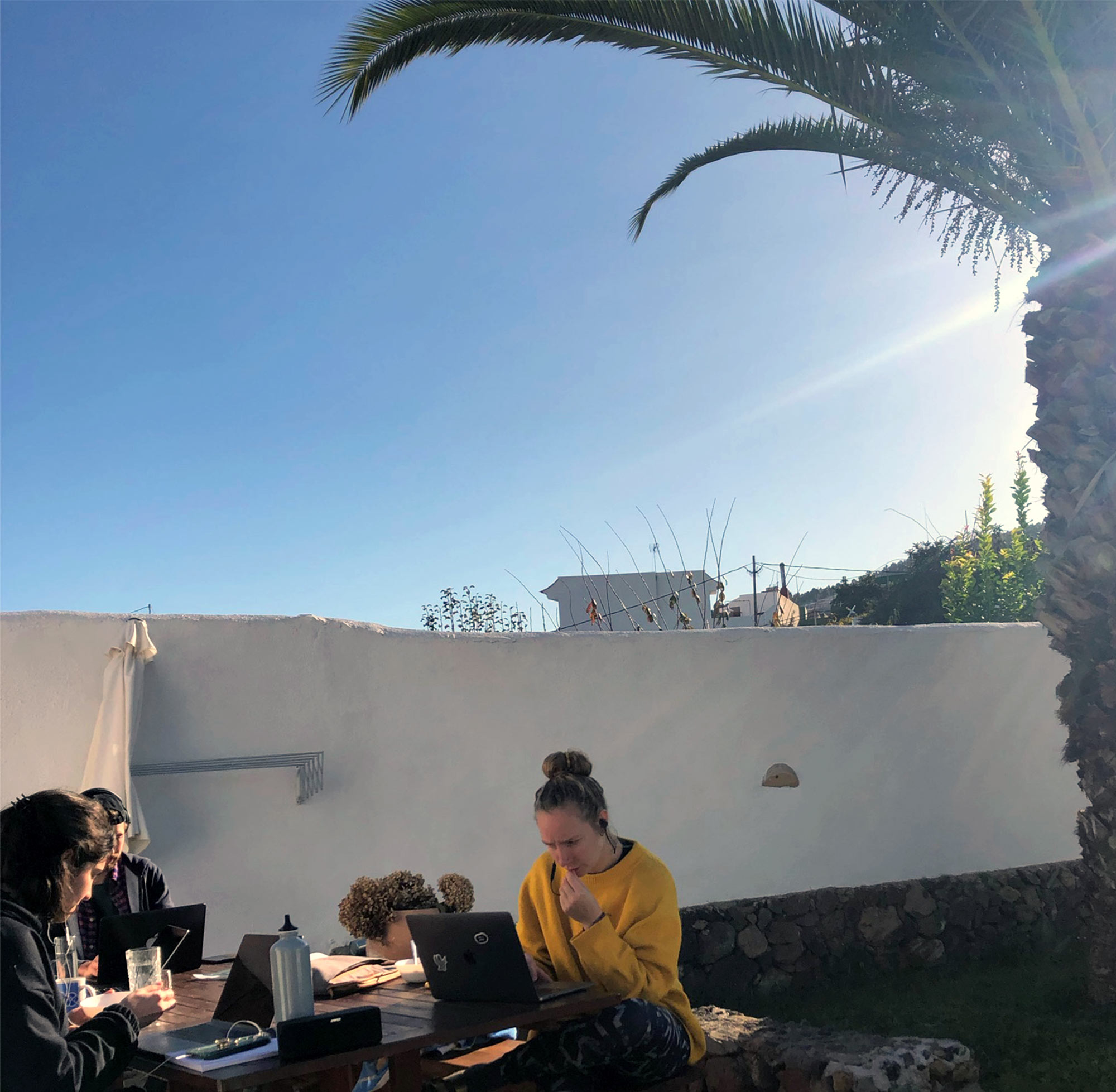
Workation on Tenerife – working in eternal spring
That the winters in Germany, especially in Berlin, especially cold and gray, we all know. With the tense corona situation on top of that, life is on the one hand even more restricted and depressing; on the other hand, new possibilities are opening up right now. For example in the way how we can work.
Many of my friends are feeling the same way right now
For me, this meant that I have to work from home anyway as much as possible in order to limit contacts. Many of my friends are feeling the same way right now. They also work in jobs that allow flexible working. So we started looking for a place to stay somewhere in the south, as long as it was warm and had a bit of sun.
Even though we initially tried to find a destination that would have been accessible without flying, in the end we decided to work on the sunny island of Tenerife. After New Year's Eve, the flights were significantly cheaper than any train journey. And we were able to compensate for the flight with a CO2 offset, after all.
A compensated flight brought us to the sunny island
So at the beginning of January our workation on Tenerife began for three other friends and me. We had planned three weeks in total. With our rental car, which we had booked directly at the airport, we finally went to our first accommodation for the first two weeks, which was on the north side of the island. Located in the mountains about 20 minutes from Porto de la Cruz, it offered us a magnificent view over the sea to one side and the mighty, snow-capped Teide volcano to the other. As we arrived on a Saturday, we still had a day to explore the area.
Workation on Tenerife: problems and benefits
Then on Monday the working day began. We quickly realized that although the accommodation was beautiful, the internet probably didn't stand up to the demands of several working people. If many people have a Zoom, Google Meet or Microsoft Teams meeting at the same time, the Internet sometimes went out or the connection broke off one or the other time. But thanks to individual hotspots, we were able to quickly put an end to this problem. So it's worth having enough data volume, 20 GB was enough for me.
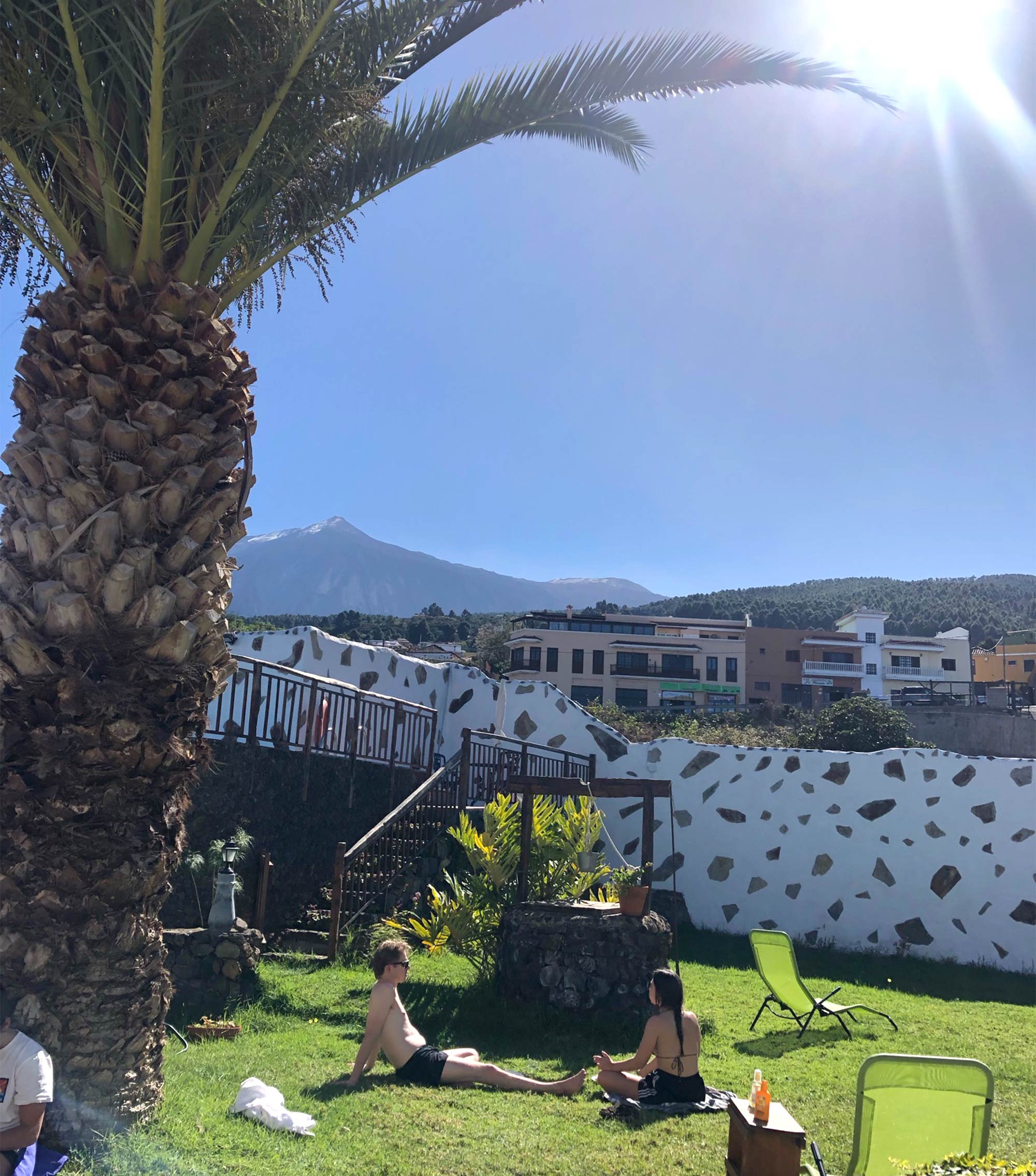
In addition to all the benefits, this problem was secondary. We started (almost) every day with a yoga session together, while the sun slowly rose behind the Teide (the highest mountain in Spain at over 3.750 meters, by the way). Then there was breakfast, while the first of us were already in meetings and others answered their emails relaxed on the deckchair in the garden. If one got too hot in the sun, we could cool down in the pool or retreat into the house. In the evening we cooked together and ended the day relaxing on the couch with a glass of red wine or a beer.
New productivity thanks to fresh air and sun on your face
After we all got used to the new way of working in our workation on Tenerife after a few days, a completely new level of productivity set in. Each of us was motivated to get our work done quickly so that we could have another hour in the sun in the afternoon read a book or go for a little hike in the mountains.

Incidentally, there are also coworking spaces on Tenerife, just like on the other Canary Islands, where you can book a place by the hour or week to work together with others. There are also more and more coworking accommodations that combine working and sleeping. For example, there are those Villa Perenquen in the middle of a banana plantation, which was unfortunately already fully booked at the time we requested. The Good Travel accommodation Finca El Quinto offers a wide range for groups who want to stay longer on the island. Many great activities are organized here, especially when it comes to leisure activities.
The work-life balance in Tenerife
We used the weekends in particular to discover the island. It takes about 60 to 90 minutes to get from one end to the other by car. If you want to drive a little more remotely into nature, you have to expect very steep and, above all, narrow roads that meander through the small villages on the slopes.
While the north side of the island is a bit cooler than the south, this side impresses with a green and diverse landscape. The often steep and rugged coast features many small bays with pitch-black sand beaches, suggesting the island's volcanic activity in ancient times. The last major eruption very close to our accommodation was in 1706 and formed natural pools in the coastal town of Garachico. The further north you go, the wilder the island gets, with roads winding through dense, green and misty forests at the very top.
In the south, on the other hand, the landscape becomes barren and rocky. At the westernmost tip of the island, the cliffs fall almost vertically many hundreds of meters into the sea. To the east, the land becomes much flatter and the beaches wider and, above all, lighter. This is certainly also the reason why the hotel complexes are piling up here and the promenades are filled with cocktail bars and sprightly pensioners and families.
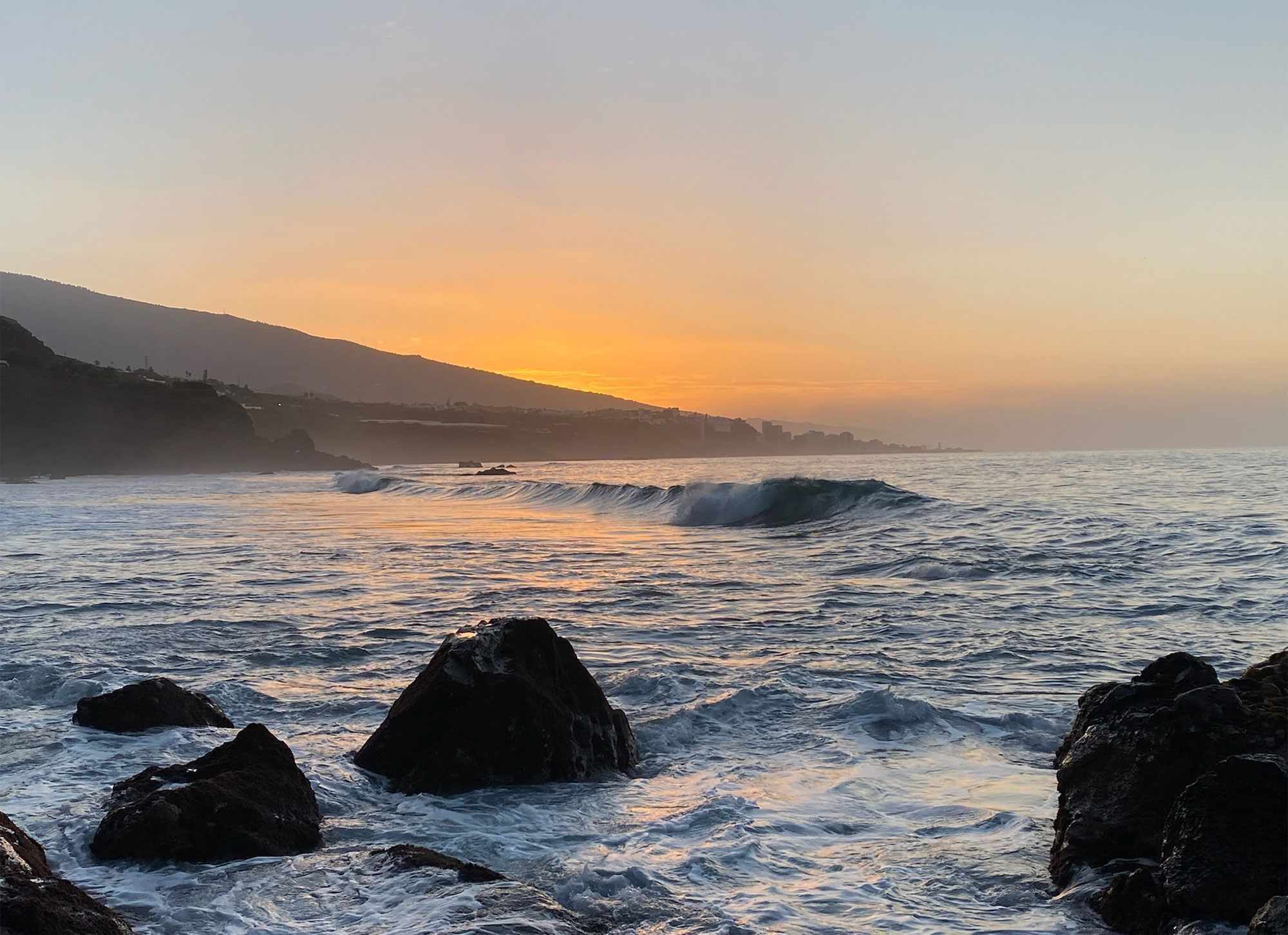
Banana plantations as far as the eye can see
Our second accommodation was near Los Cristianos, where we booked for about a week. The advantage of the southern part of the island is that it is usually a few degrees warmer and drier. Most of the land that is not built on with hotels is used for agriculture here. Mainly you will find banana plantations here.
In addition, the south offers countless sporting activities. Here you will find the best diving and snorkeling spots. Surfing, kite and kayak fans will get their money's worth here. There are also gorges that invite you to boulder and climb.
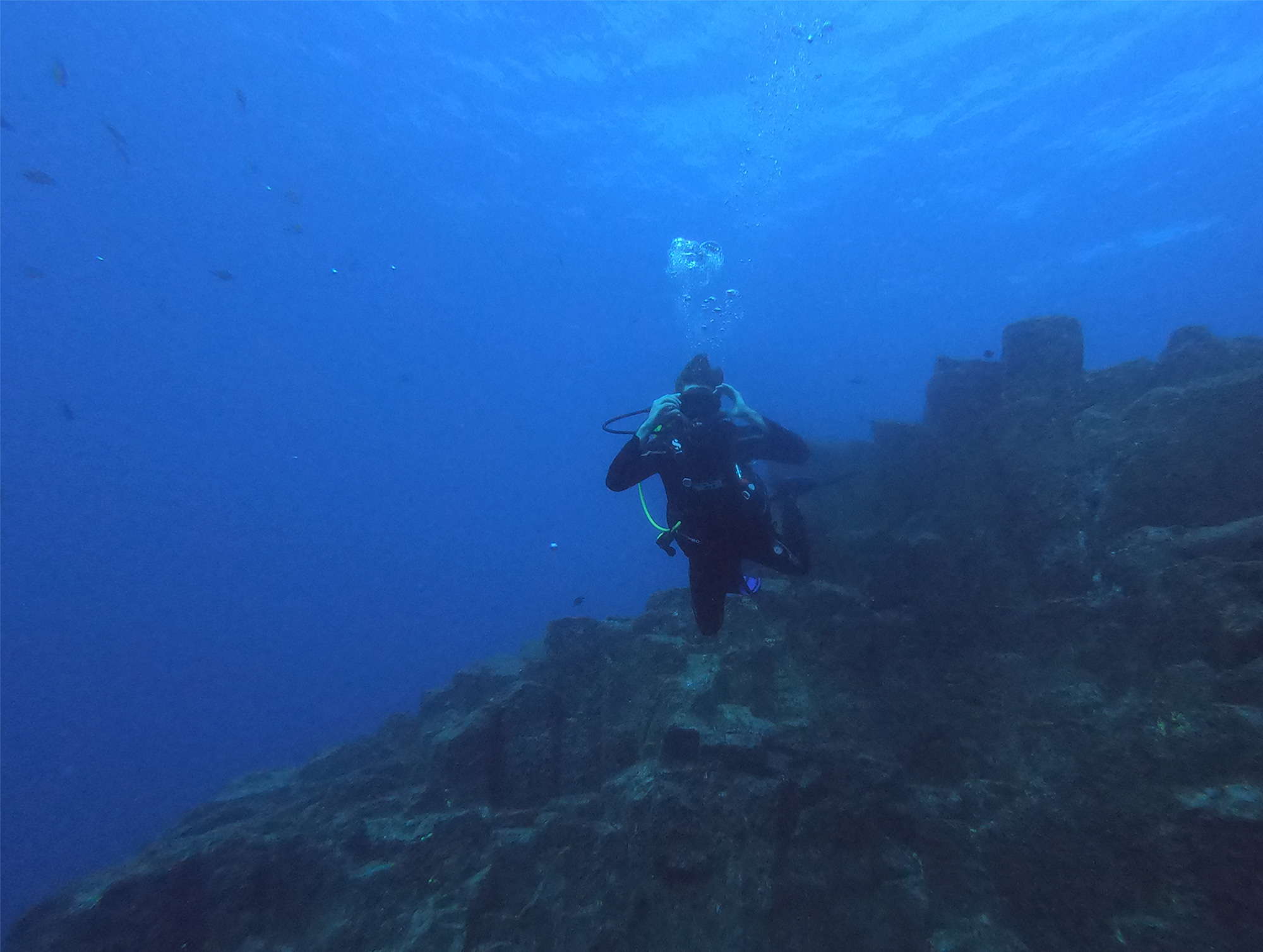
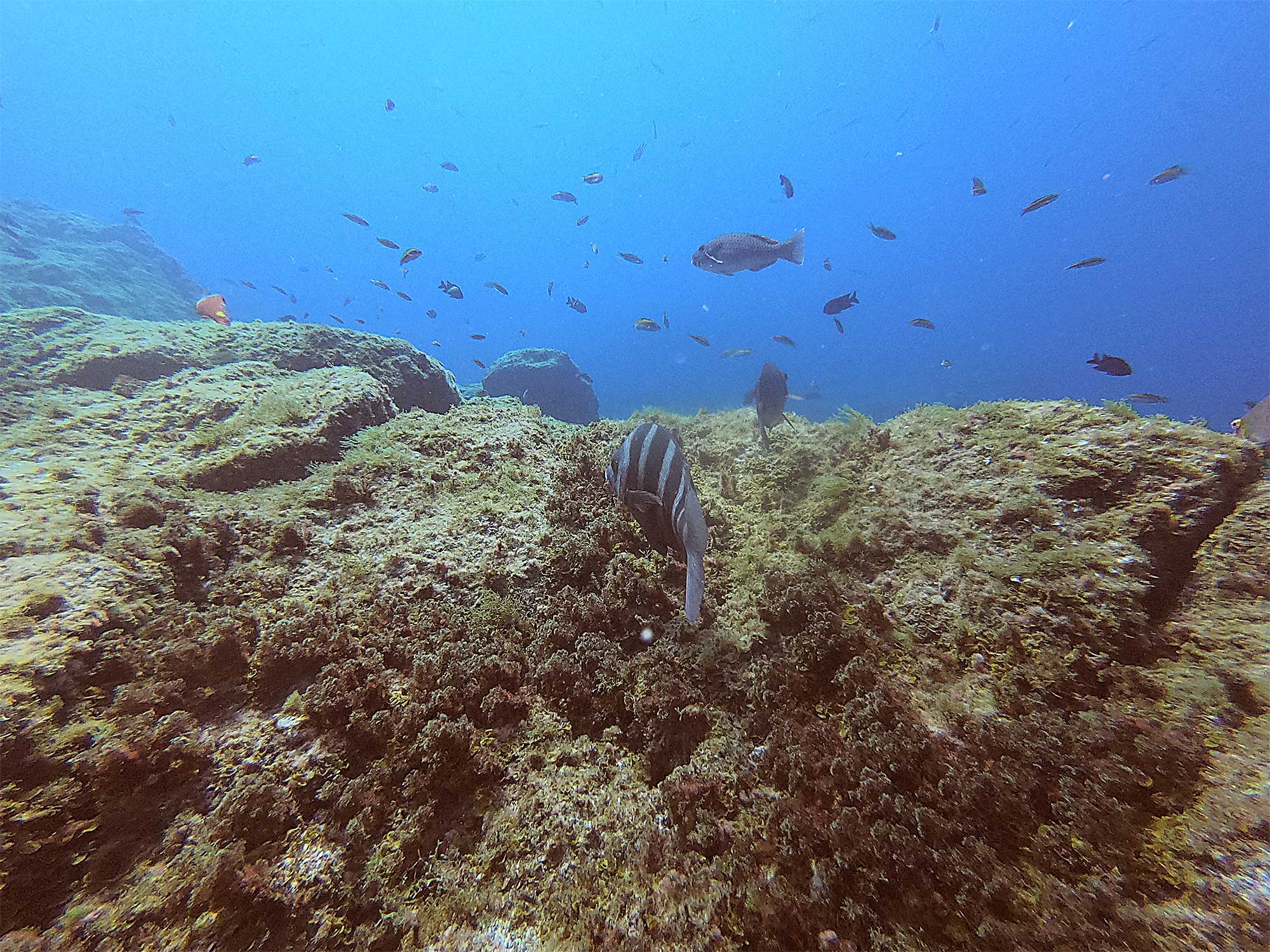
A challenging hike: climbing the mighty Teide
The mighty Teide is enthroned in the center of the island and can be seen from almost anywhere on the island on a clear day. A pass leads up to 2.500 meters, from here there is a cable car or a hiking trail to the top. The hike takes about four hours. Who wants to hike, should not underestimate that the air here, especially if you come directly from the coast, is much thinner. Some of us had to struggle with slight altitude sickness such as headaches and nausea during the ascent. In the end, however, everyone arrived at the mountain station. This is at 3.550 meters.
However, if you want to go all the way to the top of the crater, you have to get a permit beforehand. These are usually fully booked a few months in advance, as only 200 people are allowed to climb the summit each day. While it is over 20 degrees down on the coast, you have to expect minus degrees here, especially in the morning hours. Due to a Sahara storm, which at the time of our visit covered the entire island in a yellowish veil, the view from above almost seemed as if you were above the earth's atmosphere and looking down from there.

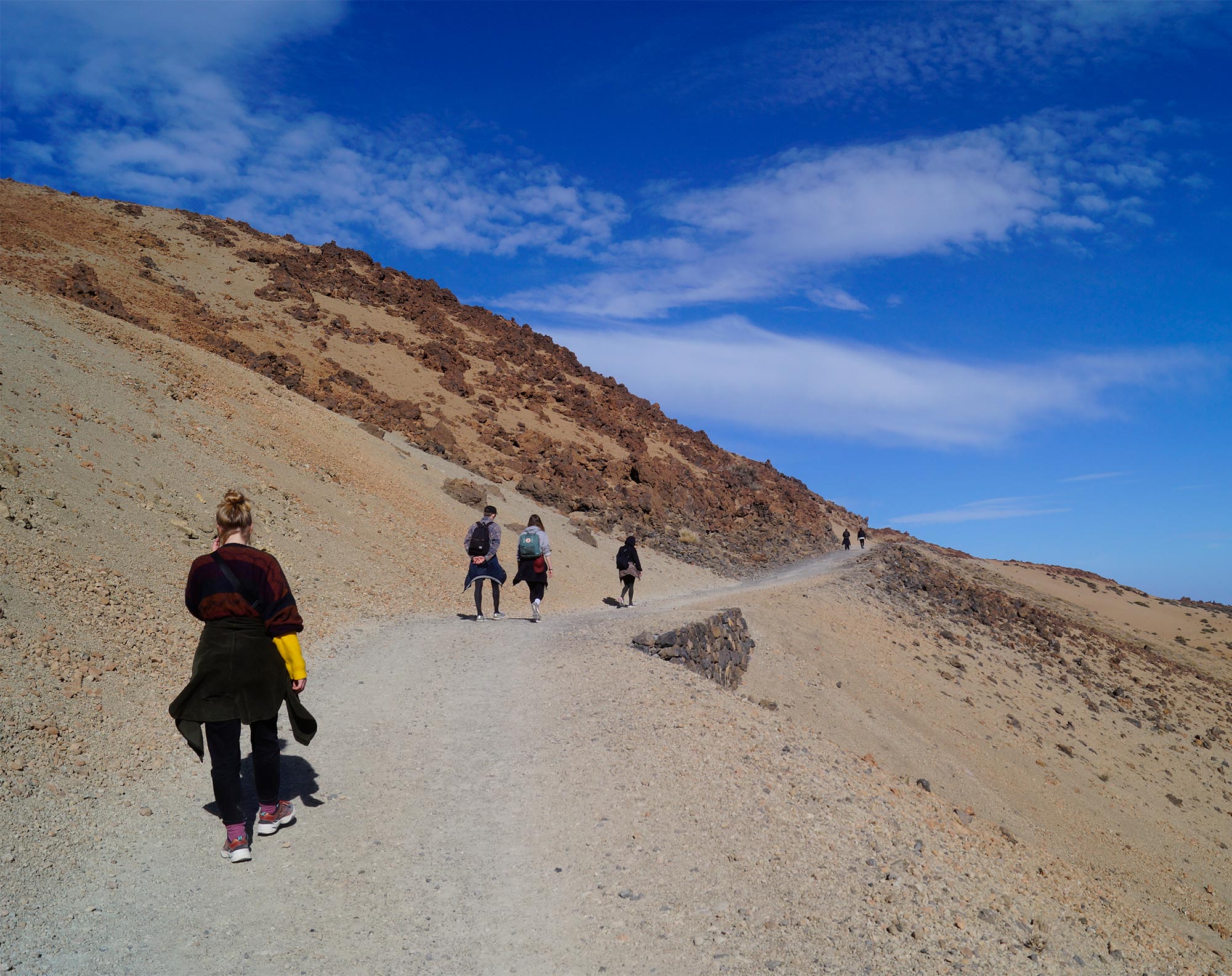

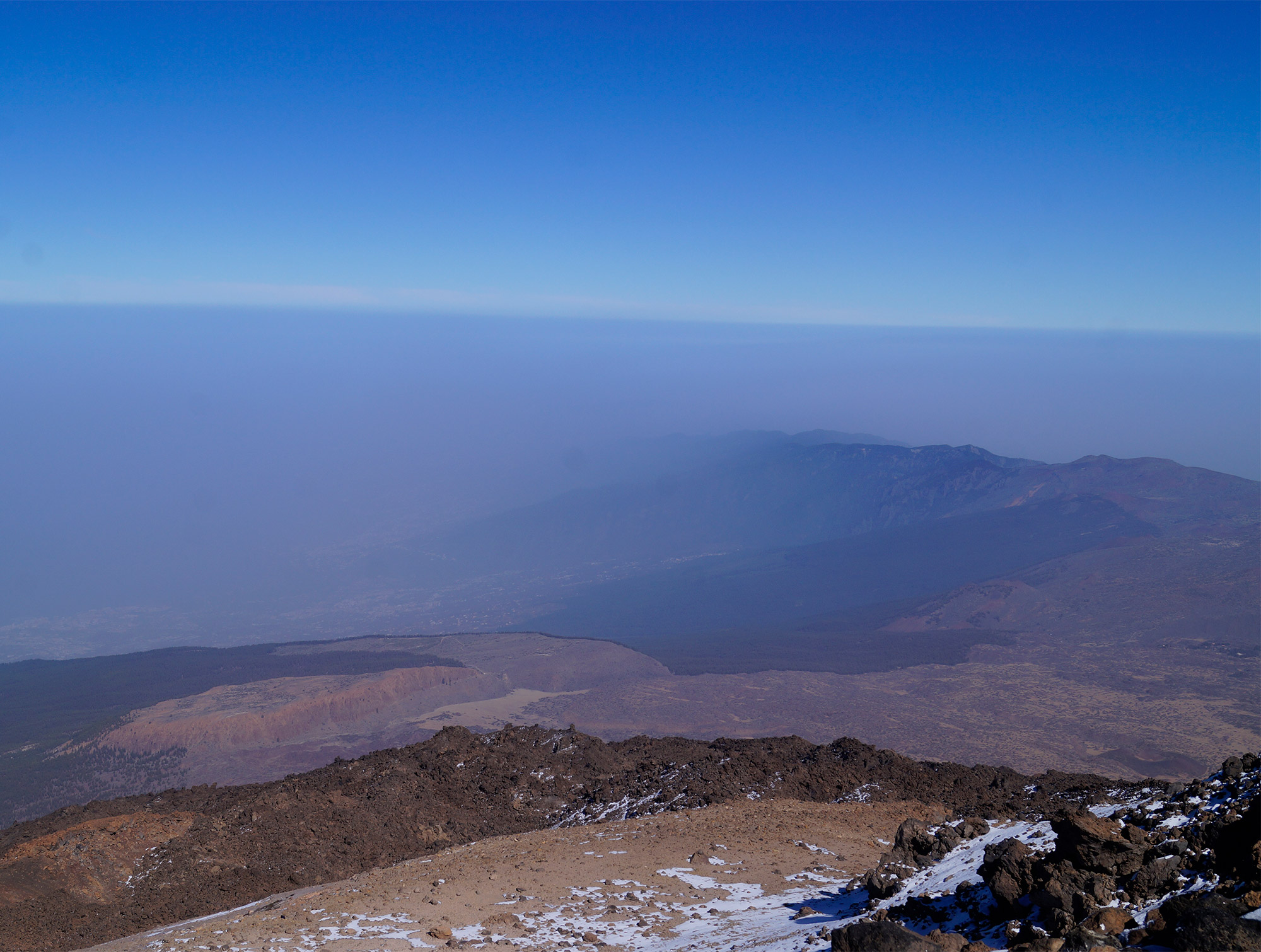

Workation on Tenerife: My conclusion
As I write this text, I am sitting on my way back to Germany. These three weeks were definitely a super intense time and I can really recommend this experience to anyone who has the opportunity to combine work and travel. Especially in the dark season, a little sun and fresh air during work is very invigorating and enriching. Of course, not to forget is the time you can spend with friends.
I can imagine that this type of travel will become more and more important in the future. For my part, I would definitely like to do such a trip again next year. And then I will try to make my stay even more sustainable - for example by not taking the plane and planning an alternative route.

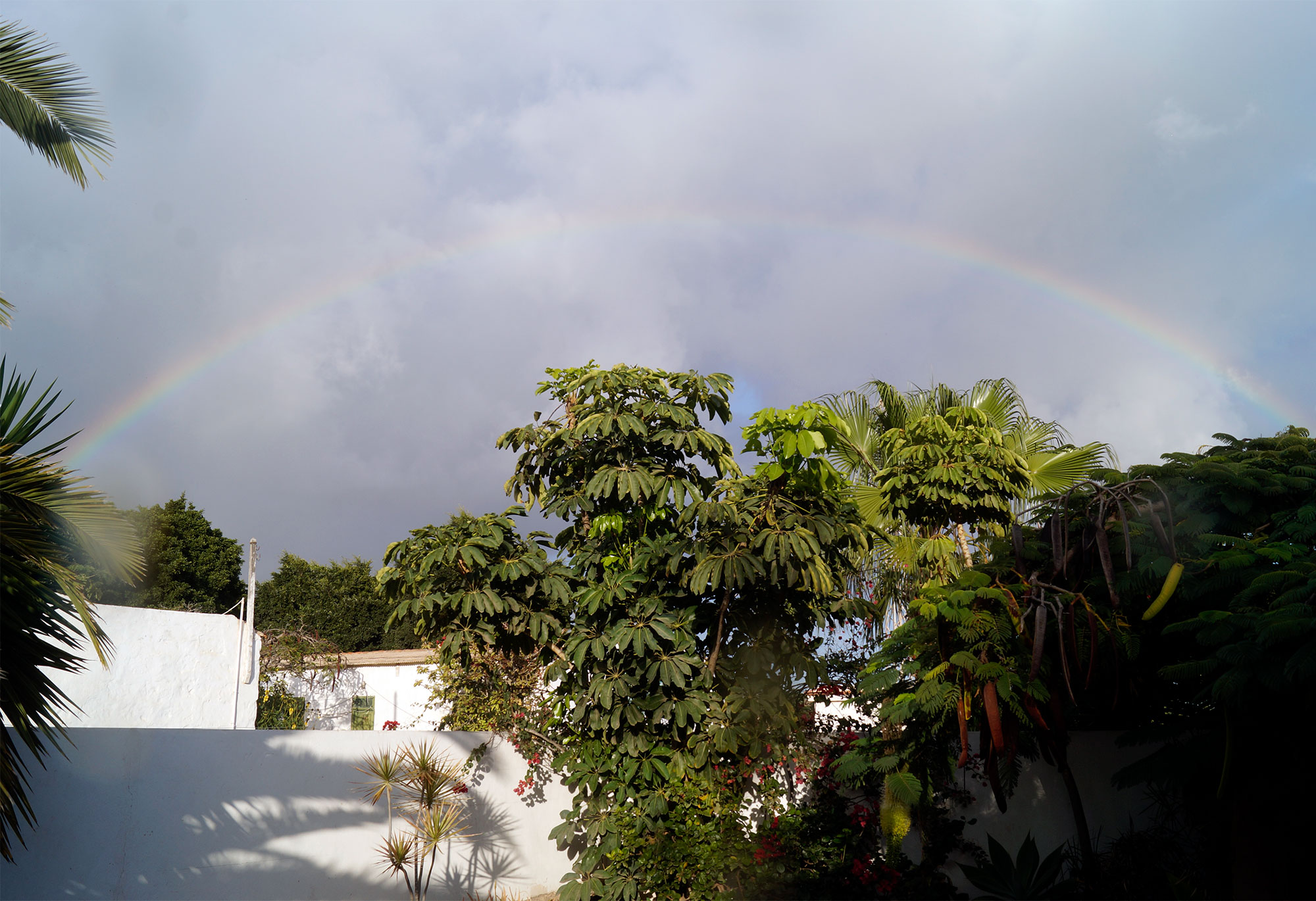
Kai Meier
Kai supports Good Travel as a freelance writer. It can't go high enough for him, whether on a via ferrata or paragliding! He loves adventure, but also the simplicity of travel. He likes to spend the night like a prince in hotels, although glamping in the wilderness should not be neglected.






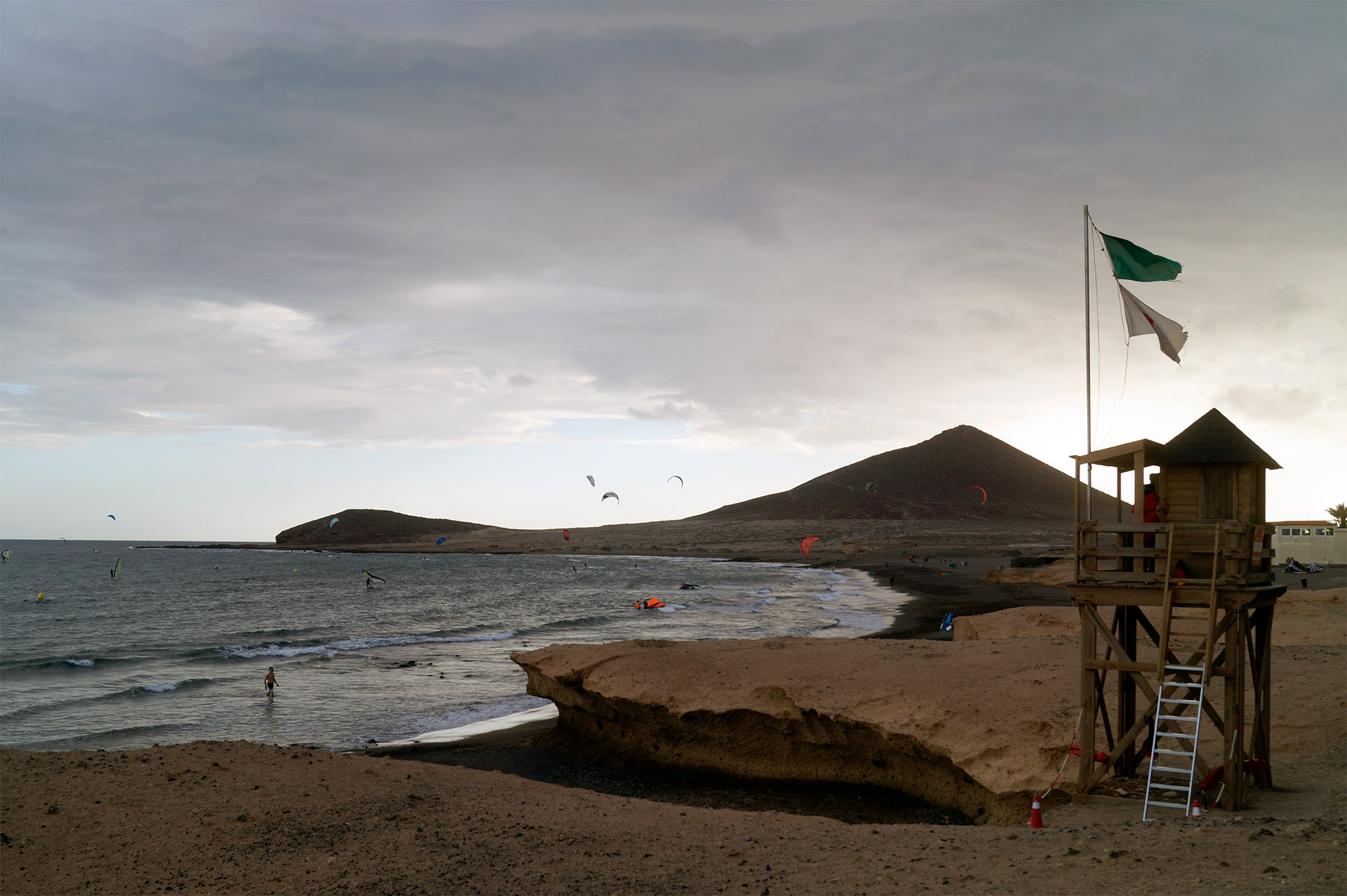



COMMENT